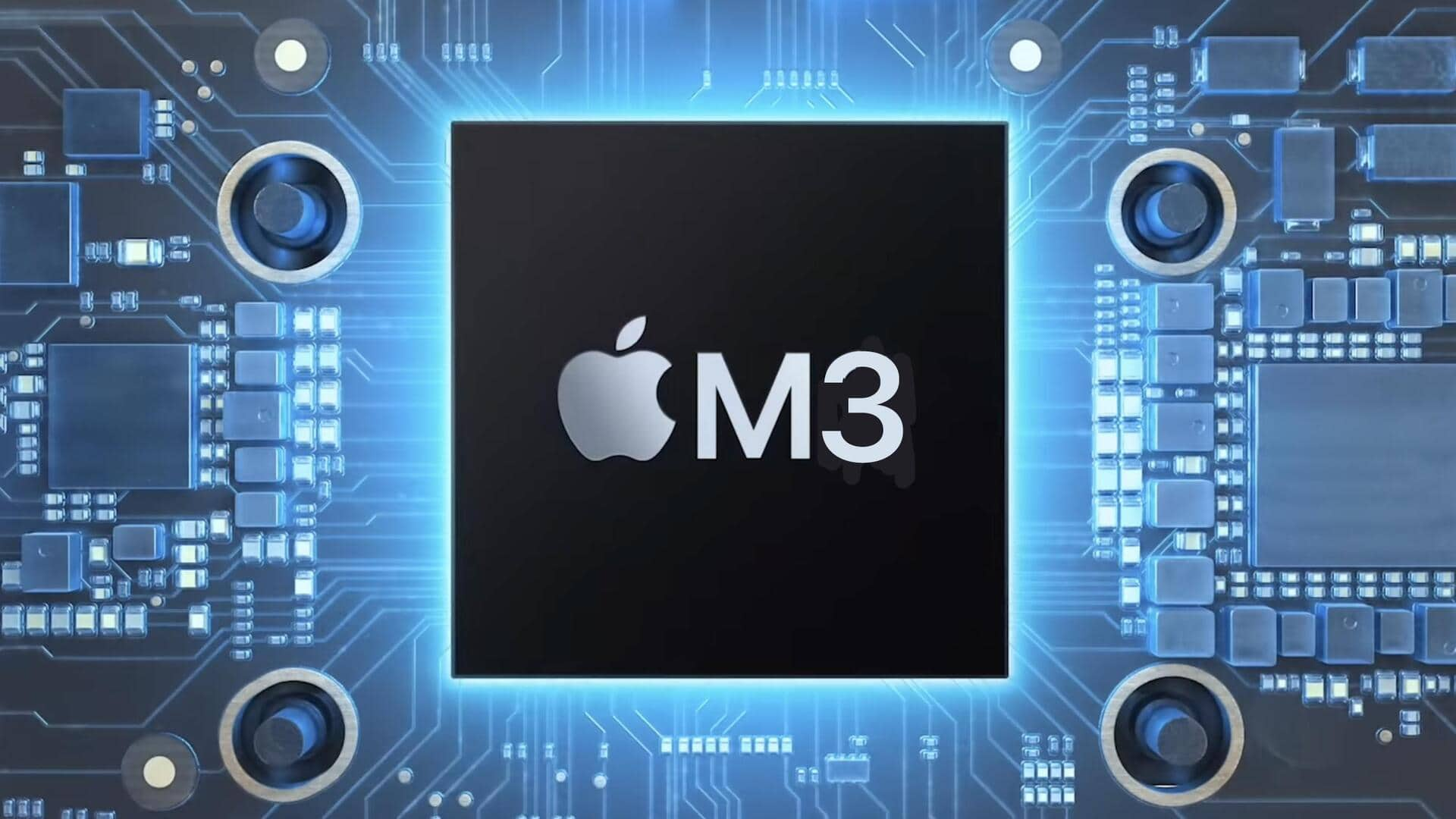
Apple M3 chips get big GPU upgrades for gaming
What's the story
At the 'Scary Fast' launch event, Apple introduced its newest M-series chips, the M3, M3 Pro, and M3 Max. These processors are manufactured using TSMC's 3nm process, providing major performance and efficiency enhancements compared to their predecessors. The 14-inch MacBook Pro offers M3, M3 Pro, and M3 Max configurations. Likewise, the 16-inch model provides a choice between M3 Pro and M3 Max, and the all-new 24-inch iMac utilizes the M3 chip.
Details
Increased core counts and architectural improvements
The M3 line-up showcases increased core counts for all variants. The base M3 chip features up to 8 CPU cores and 10 GPU cores, while the M3 Pro includes up to 12 CPU cores and 18 GPU cores. The M3 Max stands out with up to 16 CPU cores and 32 GPU cores, marking a considerable upgrade from the previous M-series chips. Per Apple, the GPU performance on the M3 Max is up to 80% faster than the M1 Max.
What Next?
Enhanced neural engine for faster machine learning
Apple's M3 chips come equipped with an upgraded Neural Engine that performs up to 60% faster than the M1 chip family. This improvement allows for more robust machine learning (ML) models while maintaining data privacy on-device. The enhanced Neural Engine ensures quicker AI/ML workflows, making these new chips perfect for tasks that demand advanced computational power.
Insights
Unified memory support and dynamic caching
The new M-series processors also support expanded unified memory capacities. The base M3 model accommodates up to 24GB of unified memory, while the M3 Pro supports up to 36GB. The M3 Max goes even further, offering support for up to 128GB of unified memory, an industry-first as Apple claims. The M3 series introduces dynamic caching for better GPU utilization, enabling more efficient resource usage and heightened performance in graphics-heavy tasks. They also consist of a revamped Media Engine.
Details
Supports hardware-accelerated ray tracing
Much like the A17 Pro, the M3 chip family provides support for hardware-accelerated ray tracing, a first for Apple M-series silicon. Compared to the M2 chips, the M3 processors bring a 15% speed boost to high-performance cores and a 30% improvement in efficient cores. These chips also bring the mesh shading feature to the table, another first for Apple Silicon. They offer swifter graphics performance as well thanks to their next-generation architecture.
Insights
M3 chips redefine the landscape of high-end gaming
With cutting-edge hardware-accelerated ray tracing and mesh shading features, M3 chips are set to redefine the landscape of high-end gaming. Typically, NVIDIA and AMD's latest GPUs feature hardware-accelerated ray tracing. But this feature in Apple's M3 chips will allow game developers to elevate the quality of shadows and reflections, similar to what's seen on modern gaming consoles and Windows-based laptops. The hardware-accelerated mesh shading further enhances the flexibility for developers to improve complex scenes in games and even GPU-intensive apps.